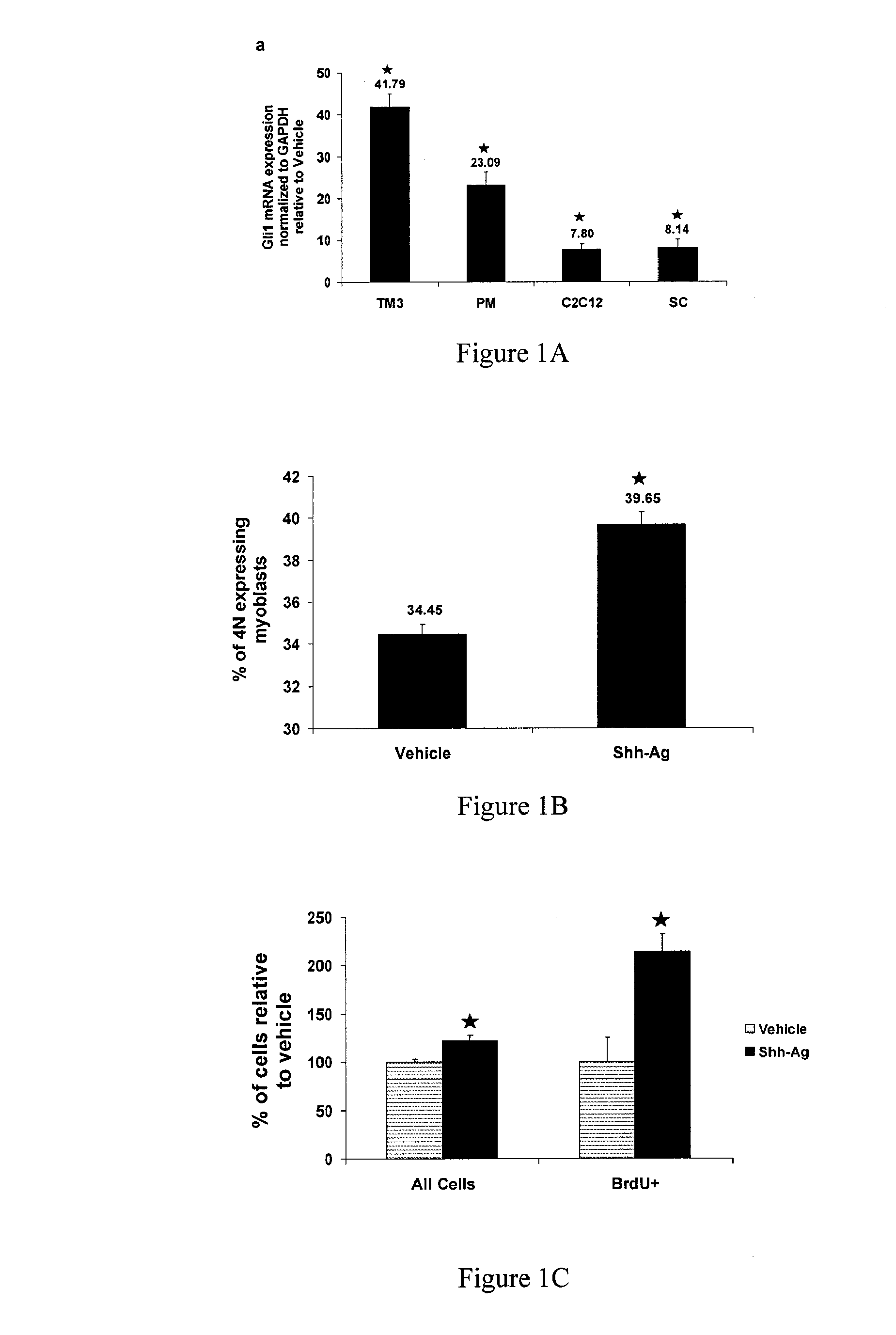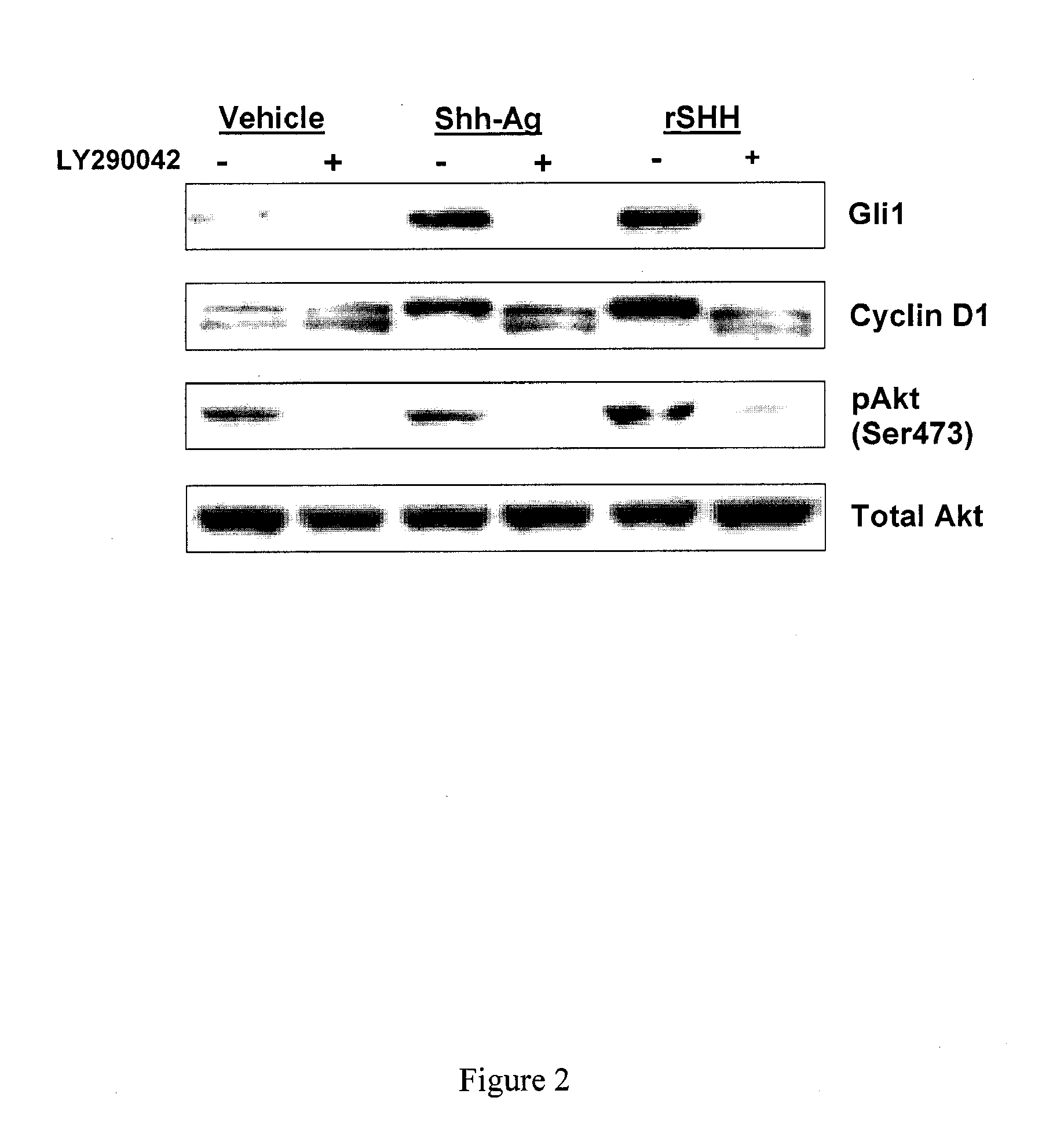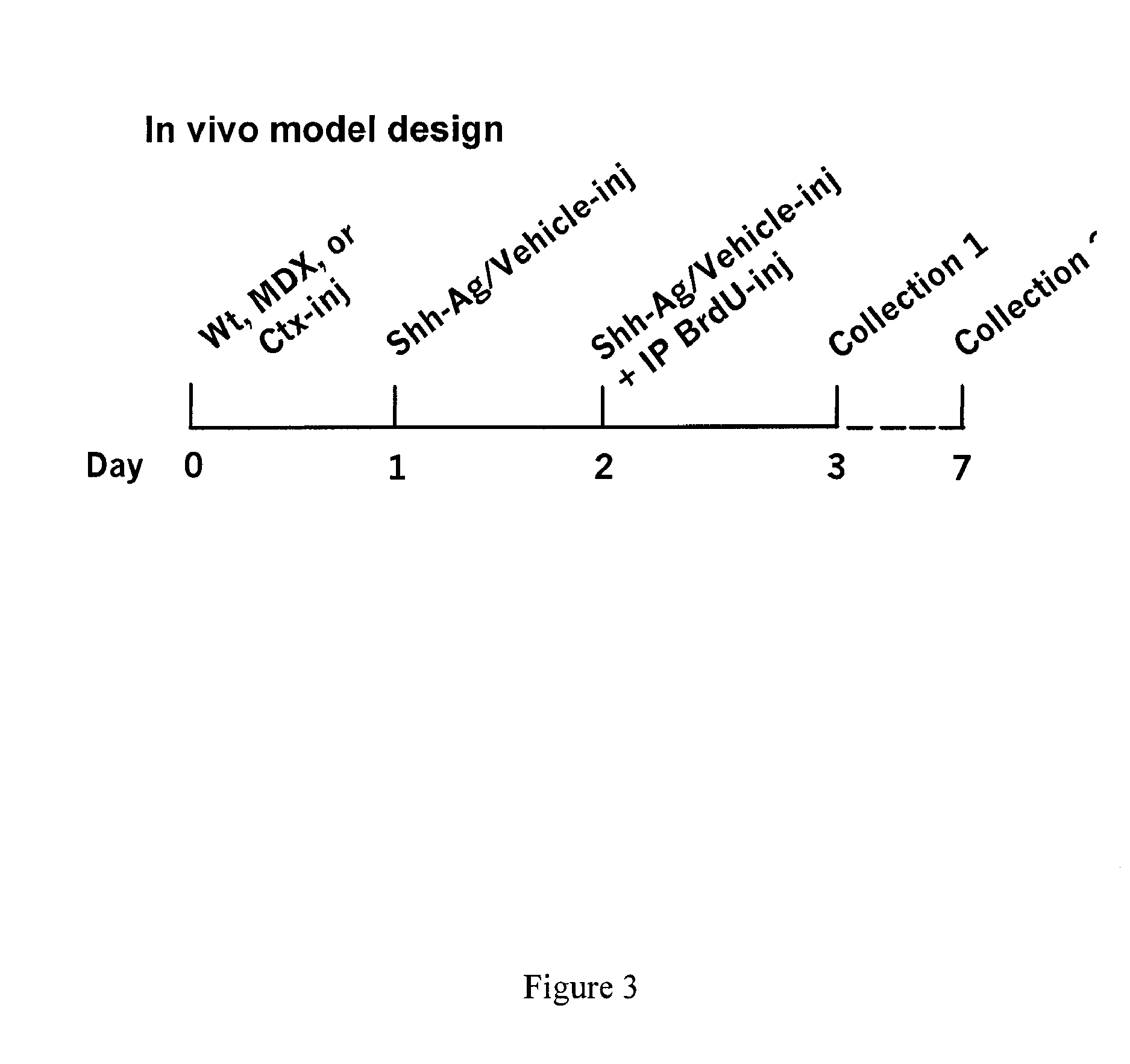Use of hedgehog agonists in the treatment of musculoskeletal-related disorders
a technology of musculoskeletal disorders and agonists, which is applied in the direction of biocide, cardiovascular disorders, drug compositions, etc., can solve the problems of reduced regenerative capacity, limited satellite cell replacement, and suffer from regenerative failure, and achieve the effect of promoting cellular proliferation
- Summary
- Abstract
- Description
- Claims
- Application Information
AI Technical Summary
Benefits of technology
Problems solved by technology
Method used
Image
Examples
example 1
In Vitro Determination of Shh-Ag Effects on Shh Signaling
[0195]To determine if Shh-Ag could activate Shh signaling in muscle cells, expression of the target and downstream functional gene, Gli1, was examined by quantitative PCR analysis in both a well-established Shh-sensitive cell line, TM3, along with three other murine muscle cell lines: primary myoblasts (PM), commercial C2C12 myoblasts, and isolated SCs. Gli1 gene expression, measured by real-time taqman assay and normalized to GAPDH levels, was compared in both vehicle (DMSO) and Shh-Ag treated (10 μM) cells, according to the methods and protocols described supra.
[0196]As seen in FIG. 1, 24 hours of Shh-Ag treatment (10 μM) robustly increased Gli1 mRNA levels in all cell lines examiner (i.e., over 40 fold in the TM3 cells, and over 20-fold in both myoblasts and myotubes, respectively). FIG. 1A shows 41.79±3.09 in TM3 cells; 23.09±3.21 in PM cells; 7.80±1.24 in C2C12 cells; and 8.14±2.01 in SCs (respective fold change relative ...
example 2
Intramuscular Injection of Shh-Ag Induces Satellite Cell Proliferation In Vivo
[0200]Shh-Ag was tested in vivo by performing direct intramuscular (IM) injections of Shh-Ag into mouse skeletal muscle. Tibialis anterior (TA) or Gastrocnemius (GA) muscles of wild-type (WT) or DMDMDX mice, a model of muscular dystrophy, were injected with 20 μl (TA) or 40 μl (GA) of either vehicle (10% DMSO / PBS) or Shh-Ag (500 μM) once per day for two consecutive days. Immediately following the second IM injection, the mice were also intraperitoneally (IP)-injected with 100 μl of BrdU. Twenty-four hours following the BrdU injection, the mice were sacrificed and their muscles were collected and prepared for FACS analysis (GA) or immunostaining (TA). For immunostaining, the muscle sections were probed with anti-laminin to mark the basal lamina, along with anti-BrdU to identify proliferating cells, and treated with hematoxylin dye to stain all nuclei.
[0201]While WT vehicle-injected muscle sections were nega...
PUM
| Property | Measurement | Unit |
|---|---|---|
| molecular weight | aaaaa | aaaaa |
| molecular weight | aaaaa | aaaaa |
| concentration | aaaaa | aaaaa |
Abstract
Description
Claims
Application Information
 Login to View More
Login to View More - R&D
- Intellectual Property
- Life Sciences
- Materials
- Tech Scout
- Unparalleled Data Quality
- Higher Quality Content
- 60% Fewer Hallucinations
Browse by: Latest US Patents, China's latest patents, Technical Efficacy Thesaurus, Application Domain, Technology Topic, Popular Technical Reports.
© 2025 PatSnap. All rights reserved.Legal|Privacy policy|Modern Slavery Act Transparency Statement|Sitemap|About US| Contact US: help@patsnap.com



